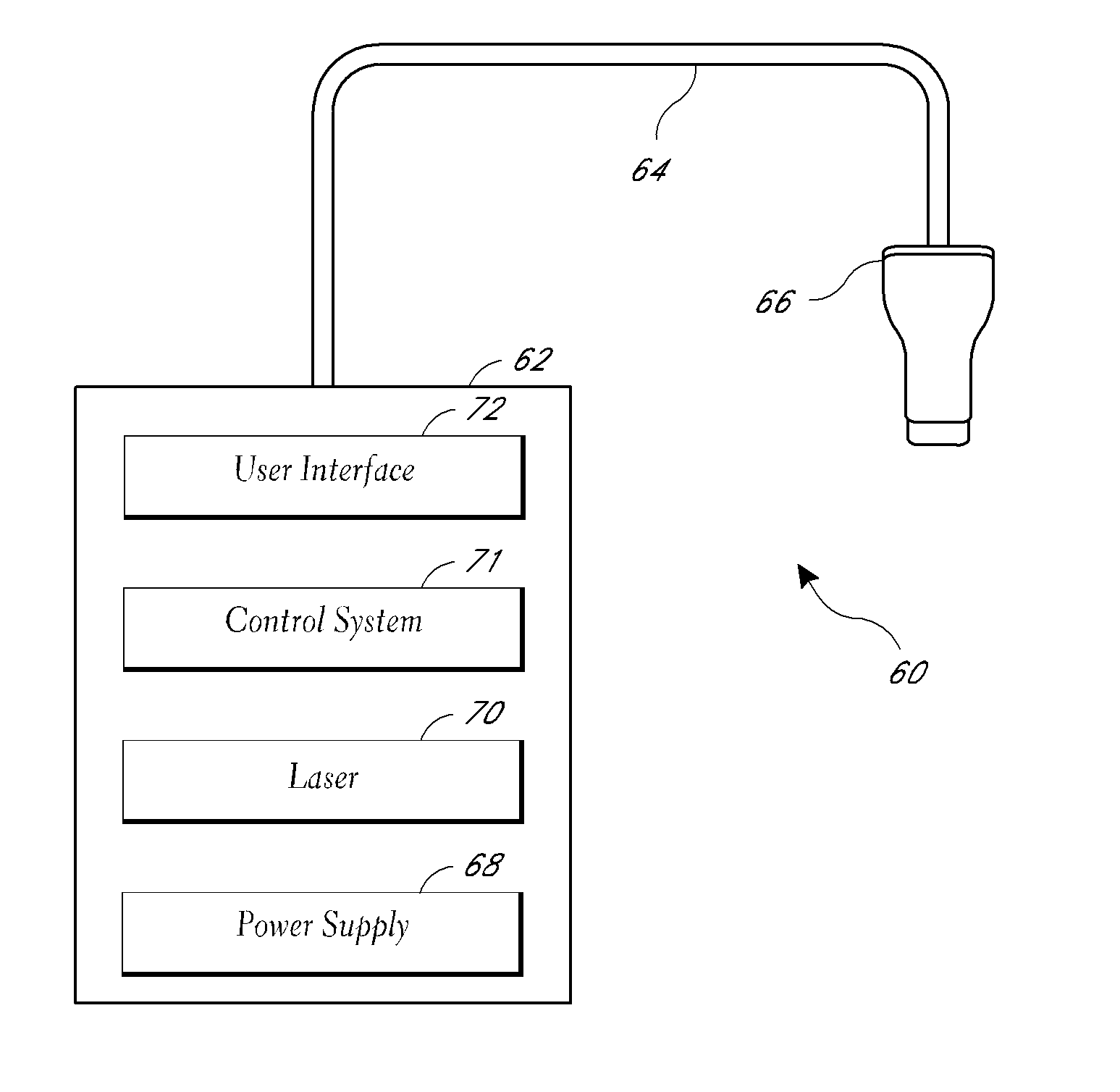Methods of light treatment of wounds to reduce scar formation
a technology of light treatment and scar formation, applied in the field of light treatment of wounds to reduce scar formation, can solve the problems of localized heat deposition through the subsurface of the skin, localized thermal damage within the epidermis and/or dermis, etc., and achieve the effect of reducing scar formation
- Summary
- Abstract
- Description
- Claims
- Application Information
AI Technical Summary
Benefits of technology
Problems solved by technology
Method used
Image
Examples
Embodiment Construction
[0033]Fractional light treatments of skin and tissue include microablative techniques that employ, for instance, laser radiation to ablate microchannels within the skin layers at controlled depths and widths. Surrounding tissue adjacent and between microchannels does not experience thermal damage along the microchannels, although thermal effects are exhibited throughout the layers of surrounding tissue. This results in the noted macro effect, discussed above, throughout the skin layers and advantageous long-term effects on the structure of the skin layers.
[0034]Referring to FIG. 1, microablative techniques control depths and widths of microchannels through the mode of laser radiation employed whether as continuous or pulsed light radiation. Typically pulsed light 10 is employed to create narrow and deep microchannels 12 penetrating to a certain depth in the subsurface tissue including the dermal layers, as well as to create comparatively superficial and wide microchannels 14 penetra...
PUM
 Login to View More
Login to View More Abstract
Description
Claims
Application Information
 Login to View More
Login to View More - R&D
- Intellectual Property
- Life Sciences
- Materials
- Tech Scout
- Unparalleled Data Quality
- Higher Quality Content
- 60% Fewer Hallucinations
Browse by: Latest US Patents, China's latest patents, Technical Efficacy Thesaurus, Application Domain, Technology Topic, Popular Technical Reports.
© 2025 PatSnap. All rights reserved.Legal|Privacy policy|Modern Slavery Act Transparency Statement|Sitemap|About US| Contact US: help@patsnap.com



